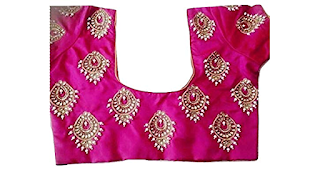Discover the importance of understanding colour proportions in design and how they can be used to create visually stunning compositions. Explore the relationship between hues and learn practical tips for achieving balance or creating visual interest.
Colour Proportions: Understanding the Relationship Between Hues
Introduction
When it comes to creating visually appealing designs, understanding colour proportions is essential. The way colours are combined can greatly impact the overall aesthetic and message of a design. In this article, we will explore the importance of understanding colour proportions and how they can be used to create exceptional visuals.
The Main Keyword: Colour Proportions
Understanding the concept of colour proportions is vital for anyone involved in graphic design, art, or even marketing. By knowing how to manipulate the ratios of different colours, designers can create stunning visual compositions that resonate with their audience.
How Do Colour Proportions Work?
Colour proportions refer to the distribution of hues in a design. This includes the ratio of primary colours, secondary colours, and any other shades used. By playing with these ratios, designers can create a sense of balance or imbalance, harmony or dissonance.
Achieving Balance through Harmonious Proportions
Balanced colour proportions are often achieved by using the 60-30-10 rule. This rule suggests that the dominant colour should take up 60% of the design, the secondary colour should take up 30%, and the accent colour should take up the remaining 10%. This ratio creates a visually pleasing composition that feels cohesive and well-balanced.
Creating Visual Interest with Imbalanced Proportions
However, sometimes designers want to create a deliberate visual imbalance or tension in their designs. By manipulating the colour proportions, they can evoke certain emotions or highlight specific elements.
For example, using a larger proportion of a vibrant, eye-catching colour can draw attention to a particular area or object in a design. Conversely, using a smaller proportion of a bold colour can create a more subtle effect, allowing other elements to take center stage.
The Role of Colour Psychology
Understanding colour psychology is essential when it comes to determining which colour proportions to use. Different colours evoke different emotions and can convey varying messages. By using the right proportions of specific hues, designers can effectively communicate the intended mood or message.
For instance, warm colours like red and orange are often associated with energy and passion, while cool colours like blue and green evoke peace and tranquility. By incorporating these colours in the right proportions, designers can set the desired tone for their design.
Experimenting with Colour Proportions
One of the exciting aspects of working with colour proportions is that it allows for endless creativity and experimentation. Designers can play with different ratios and combinations to create unique and captivating visuals.
By using contrasting colours in different proportions, designers can create dynamic and attention-grabbing compositions. On the other hand, by using analogous colours in varying degrees, they can achieve a more harmonious and calming effect.
Conclusion
Understanding colour proportions is a fundamental skill for any designer. Whether aiming for balance or creating intentional imbalances, the distribution of hues greatly impacts the overall visual experience. By harnessing the power of colour, designers can create captivating designs that effectively communicate their message and resonate with their audience.
So, the next time you embark on a design project, remember to consider the colour proportions carefully. Experiment, play, and have fun with different ratios to create visuals that truly stand out.
SEO Meta Description:



Comments
Post a Comment